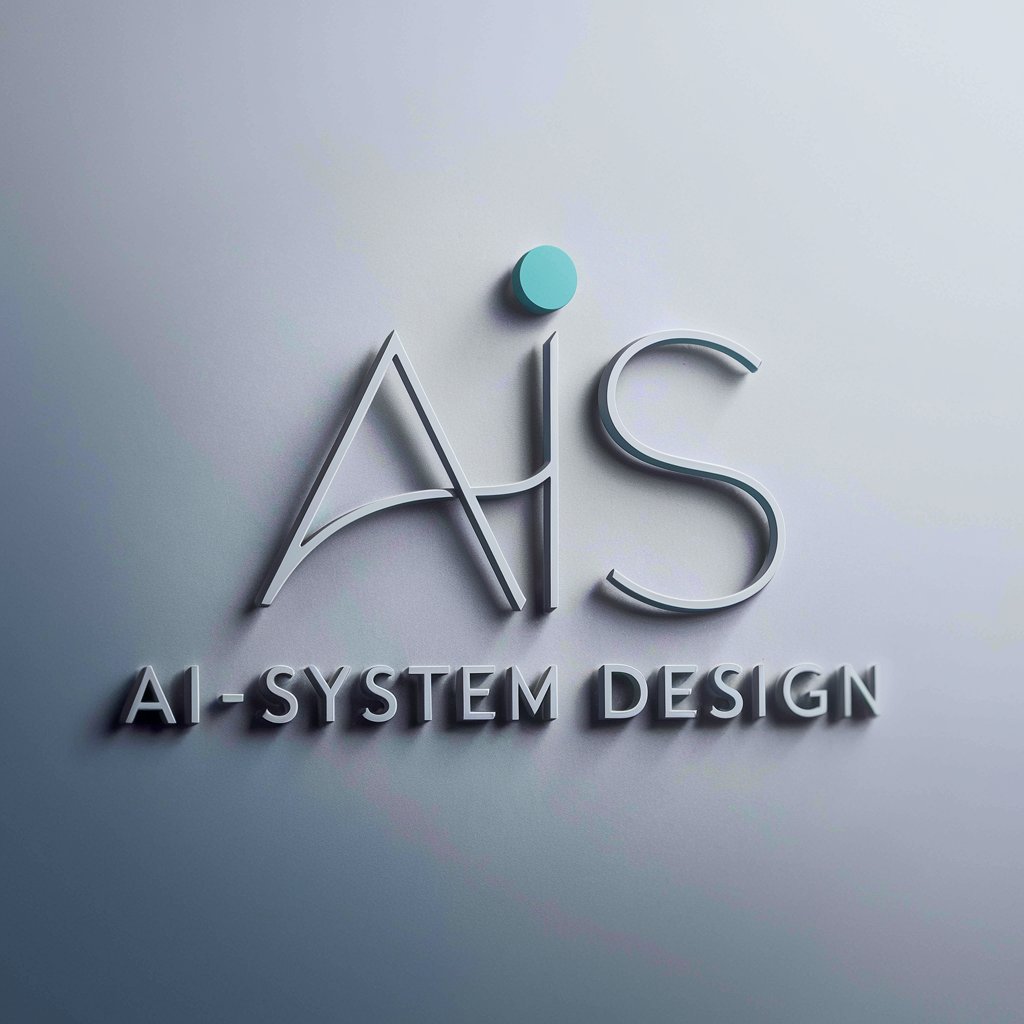AI-System Design (系统设计) - AI-Powered System Design

Hello! I'm here to assist with AI system design questions.
Designing smarter systems with AI
Describe how AI can enhance data-intensive applications in modern industries.
List the key components of a robust system design for large-scale data processing.
Explain the importance of scalability in system architecture for data-intensive applications.
Discuss the role of machine learning in optimizing system performance.
Get Embed Code
AI-System Design (系统设计) Overview
AI-System Design (系统设计), as the name suggests, is a specialized AI model tailored for system design applications. Its core function is to assist in the planning, analysis, and optimization of complex systems, ranging from software architectures to data infrastructure. The design purpose of AI-System Design is to streamline the process of system development by providing insights, generating design options, and evaluating system performances against various metrics. Examples of its application include optimizing database architectures for performance and scalability, designing fault-tolerant distributed systems, and automating the selection of appropriate technologies for specific use cases. Powered by ChatGPT-4o。

Core Functions of AI-System Design
System Architecture Design
Example
Creating a scalable microservices architecture for an e-commerce platform.
Scenario
Automatically generates and evaluates multiple architectural designs based on criteria such as scalability, reliability, and maintainability, guiding developers towards the most optimal architecture.
Performance Optimization
Example
Optimizing database performance for a high-traffic social media application.
Scenario
Analyzes existing database configurations and queries, suggesting indices, query optimizations, and schema changes to enhance performance and reduce latency.
Technology Selection Guidance
Example
Choosing between SQL and NoSQL databases for a new project.
Scenario
Evaluates project requirements against the strengths and weaknesses of various technologies, providing recommendations that align with the project's goals for scalability, consistency, and performance.
System Reliability Evaluation
Example
Assessing and improving the fault tolerance of a distributed file system.
Scenario
Simulates potential failure scenarios to identify system vulnerabilities, recommending design alterations and redundancy strategies to enhance system robustness.
Target User Groups for AI-System Design Services
Software Architects
Professionals who design the structure of IT systems. AI-System Design can assist them in evaluating different architecture patterns and making data-backed decisions to meet their project requirements.
Data Engineers
Specialists focused on preparing data for analytical or operational uses. They can utilize AI-System Design to optimize data storage, processing, and retrieval mechanisms, ensuring efficient data flow.
IT Project Managers
Individuals responsible for planning, executing, and closing projects. AI-System Design can provide them with insights into the most efficient technologies and designs, helping to reduce costs and increase project success rates.
System Administrators
Those who manage and troubleshoot IT systems. AI-System Design can aid in identifying potential system improvements and automating routine optimization tasks.

How to Use AI-System Design (系统设计)
Start Your Journey
Begin by visiting yeschat.ai for a hassle-free trial, with no account creation or ChatGPT Plus subscription necessary.
Explore Features
Familiarize yourself with the system's features and functionalities by navigating through the user interface. Take advantage of tutorials or guides available within the platform.
Define Your Objective
Clearly define your system design objectives or problems you wish to solve. This could range from academic research to practical application development.
Utilize AI Assistance
Engage with the AI-powered features for system design insights, including architecture recommendations, performance optimization strategies, and more.
Iterate and Improve
Use the feedback and results from the AI-System Design tool to refine your projects iteratively. Leverage community forums or support for advanced queries.
Try other advanced and practical GPTs
AI小山 x 內行登山諮詢
Your AI-Powered Hiking Guide

Nova - The Cosmic Star 💜
Your cosmic AI companion for creativity, learning, and exploration.

Jeff the Bookworm
Empowering Your Reading Journey with AI

Il King del Fantacalcio - Esperto di Serie A
Optimize your fantasy league with AI-driven Serie A analysis.

YesOrNo
Simplify decisions with AI randomness

Plant Buddy
Cultivating joy in plant care with AI

EnglishRootAndAffix
Unlock words with AI-powered analysis.

Garden Designer
Craft Your Dream Garden with AI

Jerky BoyAIs Prankster
AI-powered Prank Call Creativity

Harvester
Enhance web performance with AI-driven analysis.

What's On Tonight
Discover Your Next Favorite Show Tonight

Ops Oracle
Elevate Your Game with AI-Powered MW3 Strategies

Frequently Asked Questions about AI-System Design (系统设计)
What is AI-System Design (系统设计)?
AI-System Design is an AI-powered tool designed to assist users in creating, optimizing, and understanding complex system architectures through intelligent insights and recommendations.
Who can benefit from using AI-System Design?
Both professionals and students in fields such as software engineering, data science, and information technology can find AI-System Design invaluable for their work or studies.
Can AI-System Design help with academic research?
Yes, it provides tools and insights that can significantly enhance the quality of academic research by offering data-driven design recommendations and analyses.
What makes AI-System Design unique?
Its AI-driven approach to system design, providing personalized feedback and suggestions based on cutting-edge algorithms and a vast database of system design patterns and architectures.
How does AI-System Design improve project outcomes?
By offering optimized design solutions, performance enhancement strategies, and scalability advice, it ensures projects are not only efficient but also robust and future-proof.
